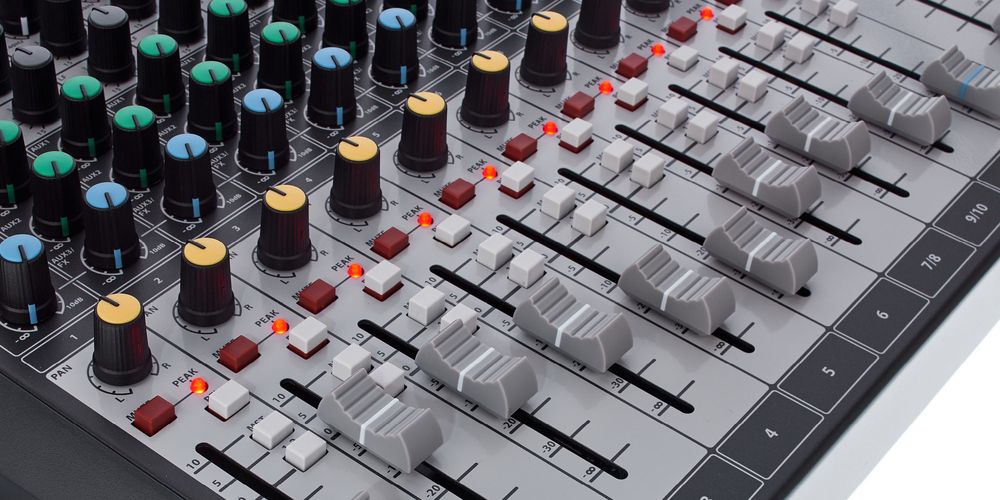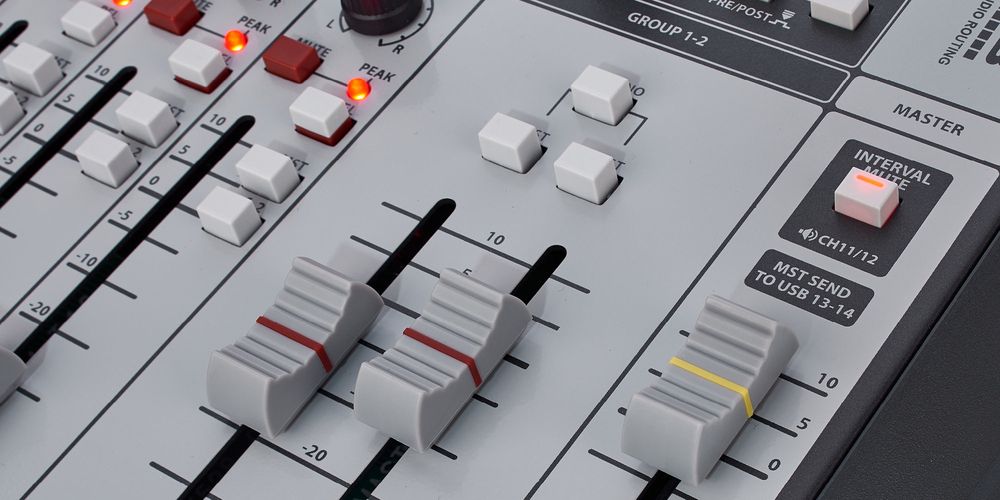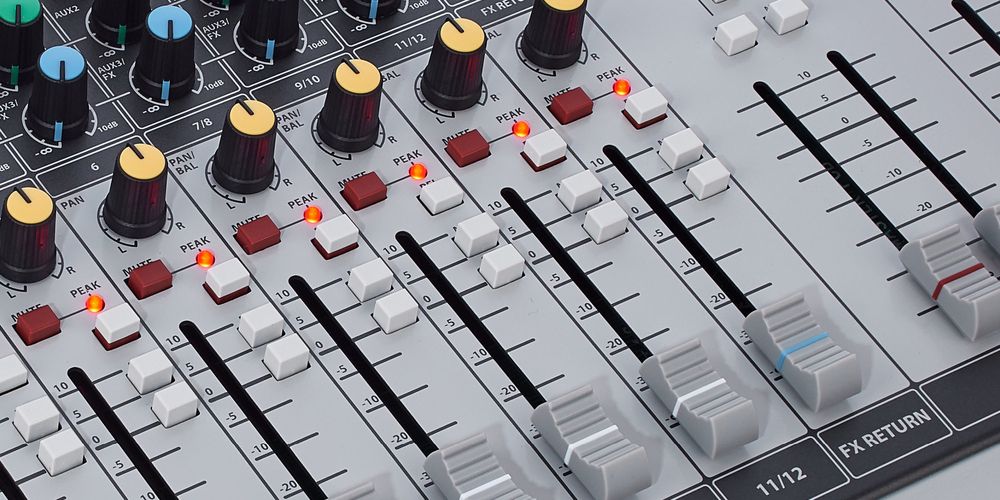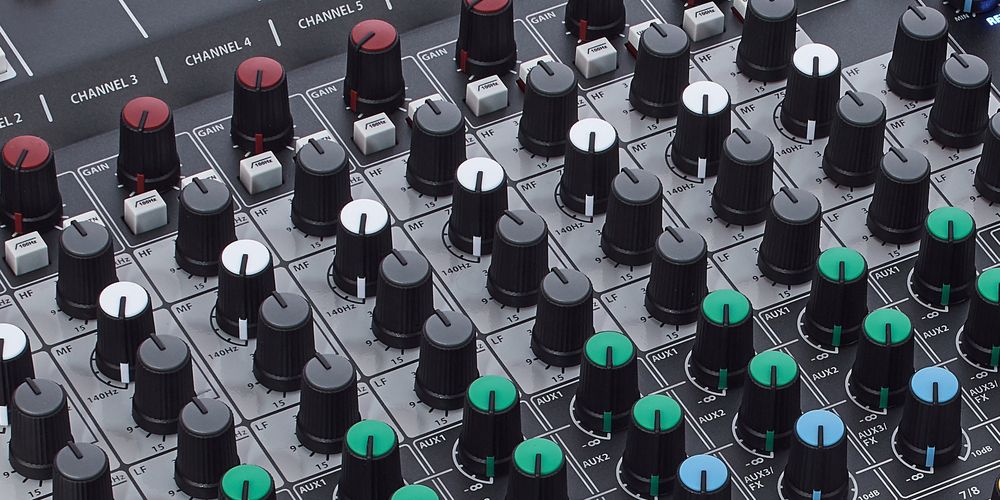3. Features
Channels
When purchasing a mixer, most people aim to balance and/or combine multiple audio signals. The number of channels a mixer can provide for managing these signals is crucial in selecting one. It's also important to determine if mono or stereo channels are needed. The quantity of necessary channels depends on whether you need mono or stereo input channels. Typically, microphone channels are mono, while channels for line signals are stereo. Both channel types generally offer similar adjustments, such as adjustable preamplification (Gain/Pre) for incoming audio level adjustment, filters (EQ/Equalizer) for sound adjustment, a control for perceived channel position in the stereo image (Pan/Balance), and, of course, the most common feature of many mixers: faders for adjusting channel volume (Volume).

Other functions that commonly appear on many mixers and can be criteria for selection include mute switches (Mute), phase inversion (Phase, Ø), pre-listening functions (PFL), and control options for feeding effects via various routes (FX/Send/Aux). The type of signal routing also matters. XLR connectors on a mixer often indicate less susceptible balanced signal routing, while quarter-inch jacks sometimes (but not always) imply unbalanced signal routing. Mixers often provide dedicated channels with RCA jacks for integrating line signals from smartphones, tablets, CD players, and similar playback devices. Thus, it's essential to scrutinize whether the chosen mixer not only offers the desired number of channels but also the required types of connectors, signal routing methods, and level indicators.
Subgroups and Master Section
As crucial as the individual channels of the mixer is the section responsible for controlling the output signals. The master section (Main) provides mixed audio signals as stereo sums for the mixer outputs and monitors any existing subgroups. These subgroups can then be used, for instance, on stage or during recording as monitor mixes. Often, EQ filters are also included. A headphone output is standard on almost all devices. Additionally, level indicators for stereo sum and internal effect sections are widely used tools.
Sound Control
When opting for a small or mini mixer, you might have limited sound control options, possibly having only one bass (Low) and one treble (High) control knob. Such mixers often use shelving filters that boost or cut low or high frequencies above a predetermined frequency. However, even in smaller mixers, fixed-frequency filters for midrange adjustments are common. For more precise control, you'd require fully parametric equalizers. With these, not only can you adjust the central frequency but also the bandwidth (Q value) of the adjustment, determining how wide the "brush" should be in altering the audio signal at the selected frequency. If you have the intent to meticulously shape the sound of individual sources or the mix, the type of equalizer provided by an analogue mixer should be considered when making your purchase decision. Depending on your needs, it might suffice if only the master section allows detailed sound control.
Effects
Even smaller analogue mixers offer various ways to process audio signals with external effects. Apart from the previously mentioned method of controlling effects via an FX/Send/Aux path, many mixers also feature insert jacks. These jacks utilize special Y-cables that interrupt the signal flow in the mixer by simultaneously tapping the audio signal of the respective channel, sending it to an external effects unit, and routing the processed signal back into the mixer. Unlike effects whose contribution is adjustable via a Send/Aux path, effects in the Insert path can only be regulated in the effects unit itself by adjusting the ratio of processed to unprocessed signal (Wet/Dry). Therefore, if you plan to use diverse effects, ensuring that your chosen mixer has an appropriate number of insert jacks and/or Send/Aux paths in the individual channels or master section is important.






